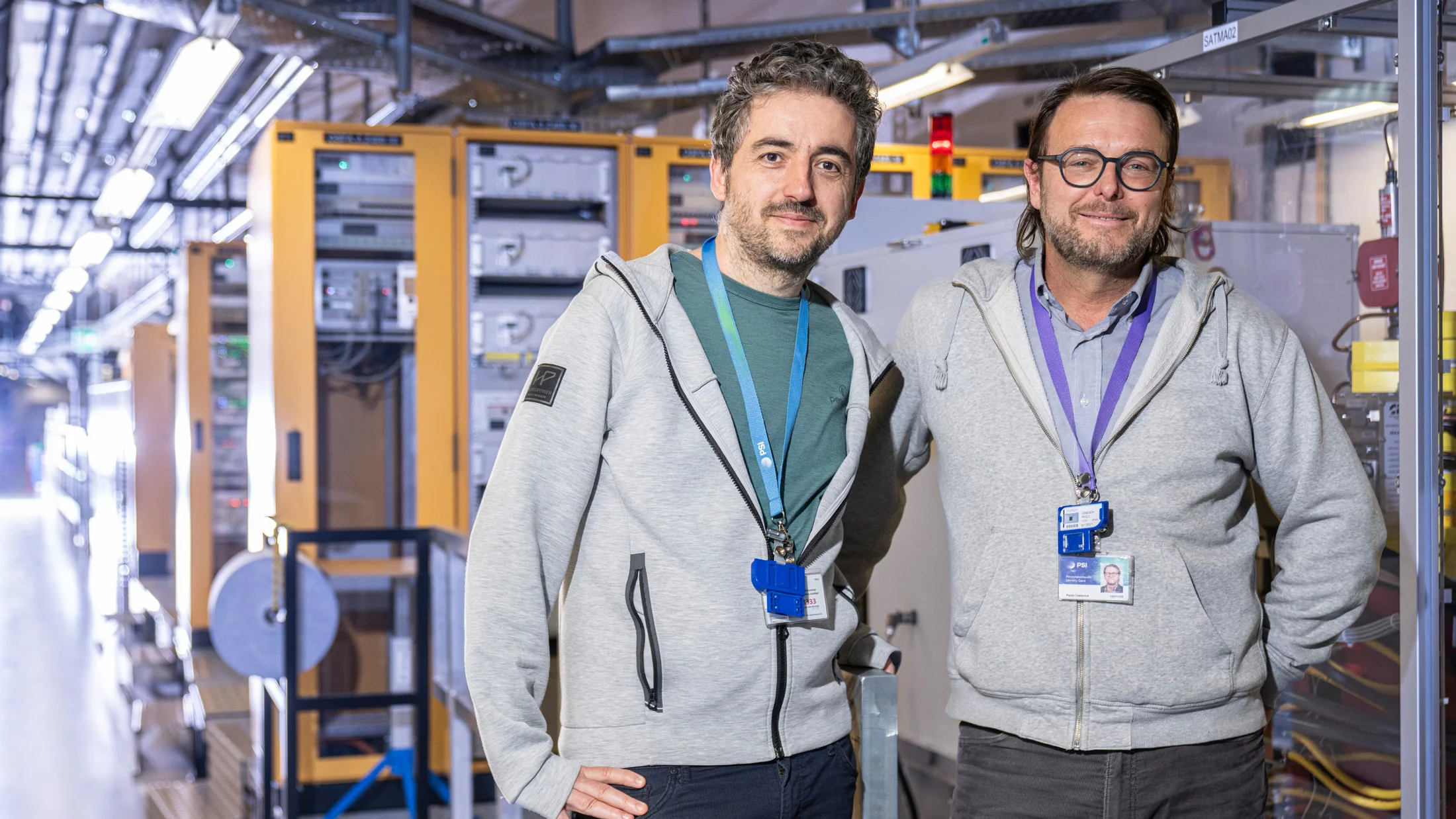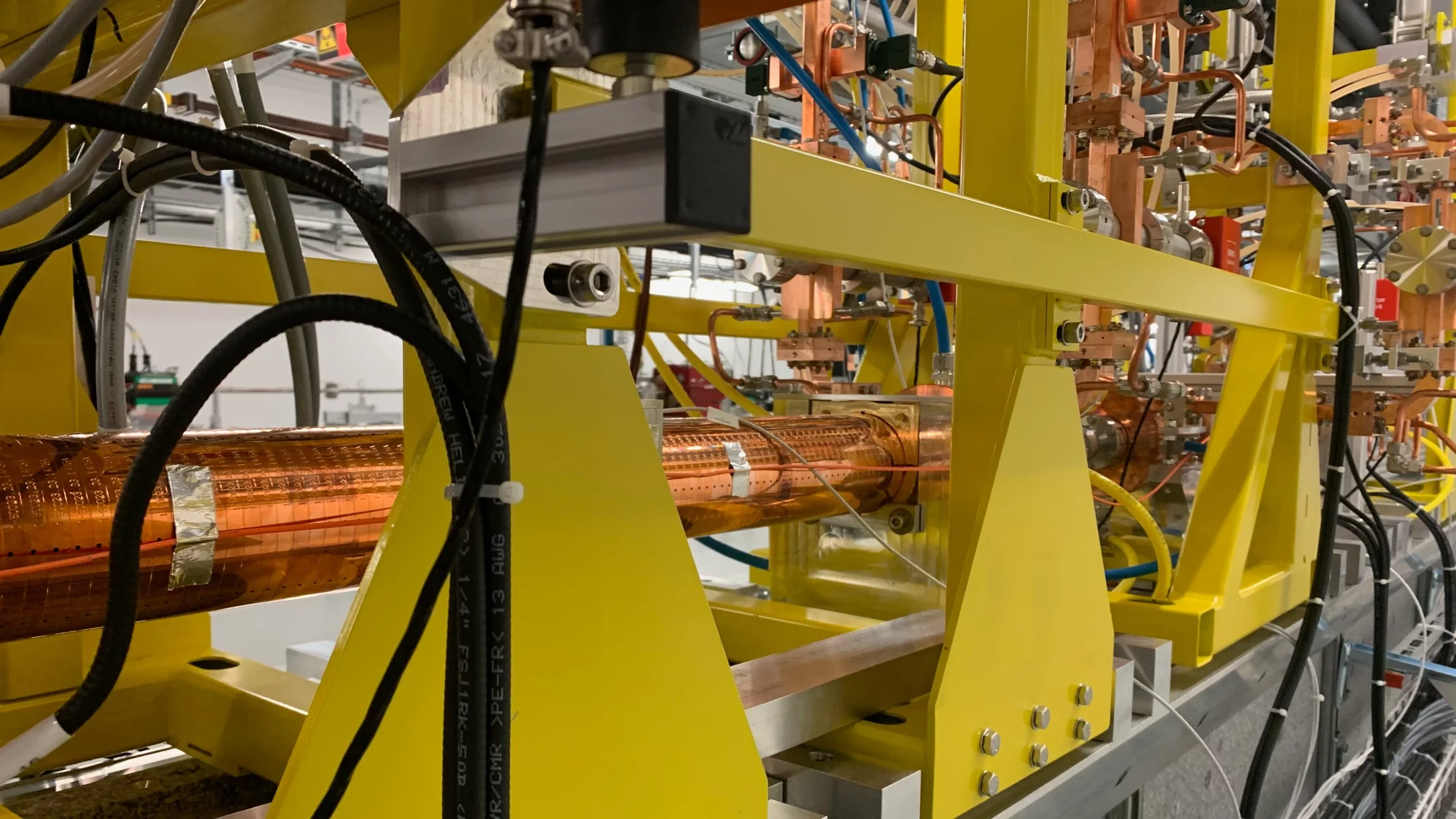As scientists push X-ray free electron lasers into the attosecond regime, diagnostic tools with higher precision are needed. Now scientists at the Paul Scherrer Institute PSI have demonstrated the ability to characterise pulses as short as 300 attoseconds: a world record time-resolution using electron-beam streaking.
X-ray free electron lasers such as SwissFEL generate short and powerful pulses of X-ray light that allow scientists to study atomic and molecular processes in action. Scientists are now striving to generate shorter and shorter pulses to access attosecond timescales (10-18 s) and observe the motion of electrons in real time.
Capturing such ultrafast processes with X-rays requires not only attosecond pulses; it also requires ways to precisely characterise the X-rays. “You need to know exactly how long each pulse lasts for and when the brightest parts of the pulse hit, for example,” says Eduard Prat, scientist in the beam dynamics group at SwissFEL. “For many scientific applications, if you don’t have this information, you’re blind.”
A team from PSI has recently demonstrated that the PolariX - a type of radiofrequency deflector device developed by PSI in collaboration with CERN and the German research centre DESY - can meet the ambitious requirements of attosecond science.
The electrons tell the story of the X-rays they made.
To create the X-ray light in the SwissFEL, bunches of electrons are accelerated to close to the speed of light and wiggled in a series of magnets called undulators, whereby they emit intense bursts of photons – the X-ray pulses.
At attosecond timescales, it’s difficult to measure the properties of these pulse directly in a reliable way. X-rays interact only weakly with matter, and traditional sensors aren’t fast enough to resolve attosecond-scale events. Instead, scientists can study the electrons that produced them.
Sitting after the undulators, the PolariX measures the electron bunch after they’ve released their photons. The device bends the beam using a radiofrequency field, spreading out the electrons depending on their exact arrival time – a method known as electron beam streaking. From the spread, the length of each individual electron bunch can be measured.
When the electrons emit photons (in technical terms, they ‘lase’), they lose energy. By measuring this energy difference, and how it is spread at the parts of the electron beam that lase, PolariX provides information on the X-ray pulse, in particular how its intensity varies over time.
A #MadeAtPSI success story
Although electron streaking is a relatively well-established technique for X-ray pulse characterisation, what makes PolariX unusual is that it can streak in any direction, helping to fully characterise the electron bunch – a concept invented at CERN and realised thanks to the radiofrequency technology at PSI. In contrast, most other devices only streak in one direction, giving limited information about the electron beam.
During the last seven years of development at PSI, the PolariX has become one of the world leading devices for this purpose. Five devices are in operation at DESY in Germany, with whom the device was developed, and the team at PSI is currently in discussion with other institutes worldwide to provide them with their RF technologies.
“Pretty much all of the systems and components of PolariX were made at PSI,” says Paolo Craievich, who leads the RF systems group at PSI. “Over the course of PolariX’s development, we have become very experienced, and now we are leading in the world. I’m very proud for the whole RF section – it’s the work from many different people.”
A world record time resolution
Now, in their latest publication, the team from PSI have demonstrated a time resolution of just 300 attoseconds using the machine: a world record in electron-beam based diagnostics of pulse duration. The measurements were made on the soft X-ray beamline at SwissFEL, Athos.
“This success is down to a combination of factors, and demonstrates the complimentary expertise at SwissFEL,” explains Craievich. “It’s down to the high quality that we strive to with the RF systems. But it’s also down to the low emittance of the electron beam and exquisite control of the beam optics.”
The ability to measure pulses at attosecond resolution complements research efforts at SwissFEL to develop attosecond pulses (see SwissFEL: a next generation tool for Attosecond Science | News & Events | PSI). As these efforts to create attosecond pulses at SwissFEL push forwards, so does the drive to measure them with equal precision—fuelled by the same determination that set this world record: “Our goal is to reach a resolution of 100 attoseconds,” says Prat.
The 2023 Nobel Prize in Physics was awarded to Pierre Agostini, Ferenc Krausz and Anne L’Huillier for their pioneering work in attosecond science – a field that sheds light on the movement of electrons on their natural timescale. Electron motion is one of the most basic drivers of change in nature, underpinning everything from the making and breaking of chemical bonds, to the functioning of biological processes, to charge flow in advanced materials – and the electronic and quantum technologies built on them.
The Nobel Prize–winning attosecond research was performed with table-top laser systems in the extreme ultraviolet energy range (albeit complex ones!). The next big step is to combine the benefits of X-ray free electron laser light with this remarkable timescale – a step that would transform our abilities to explore matter, life and light at the most fundamental levels.
Contact
Original Publication
-
Prat E, Geng Z, Kittel C, Malyzhenkov A, Marcellini F, Reiche S, et al.
Attosecond time-resolved measurements of electron and photon beams with a variable polarization X-band radiofrequency deflector at an X-ray free-electron laser
Advanced Photonics. 2025; 7(2): 026002 (9 pp.). https://doi.org/10.1117/1.AP.7.2.026002
DORA PSI


